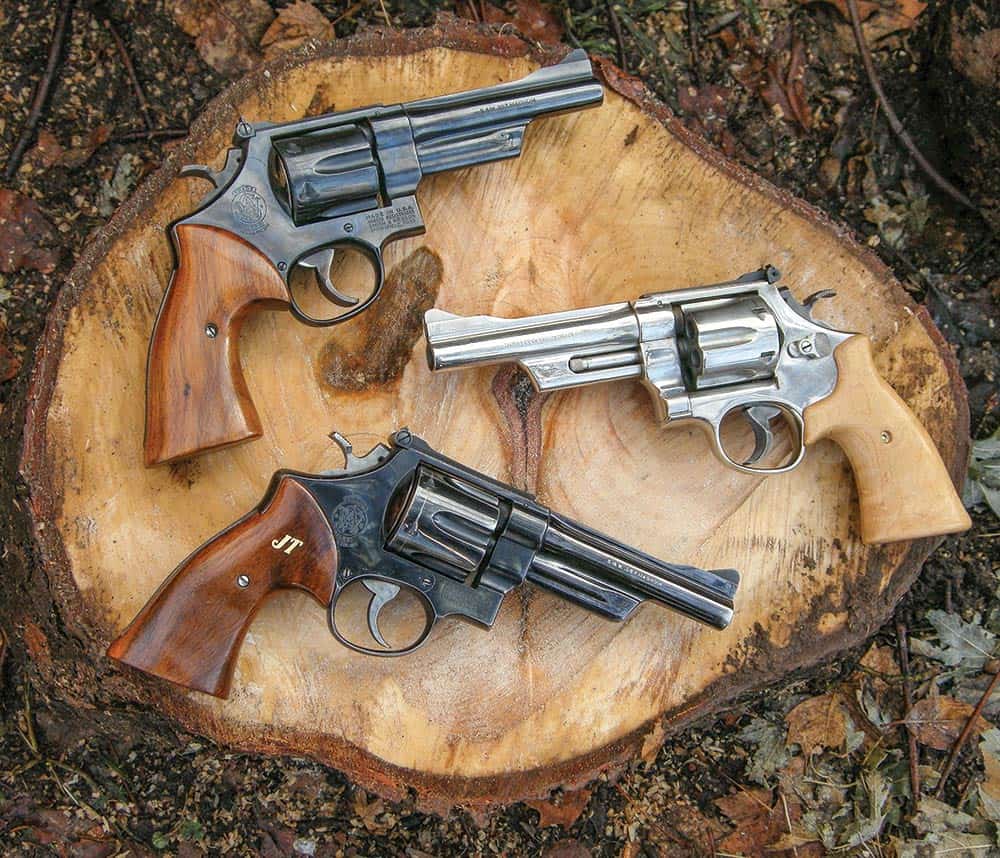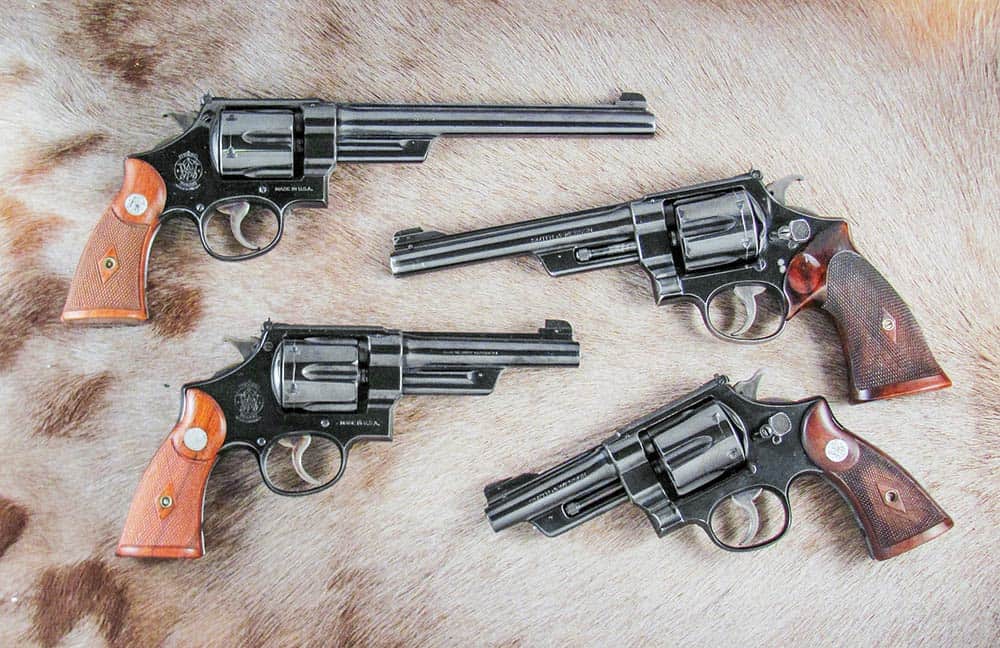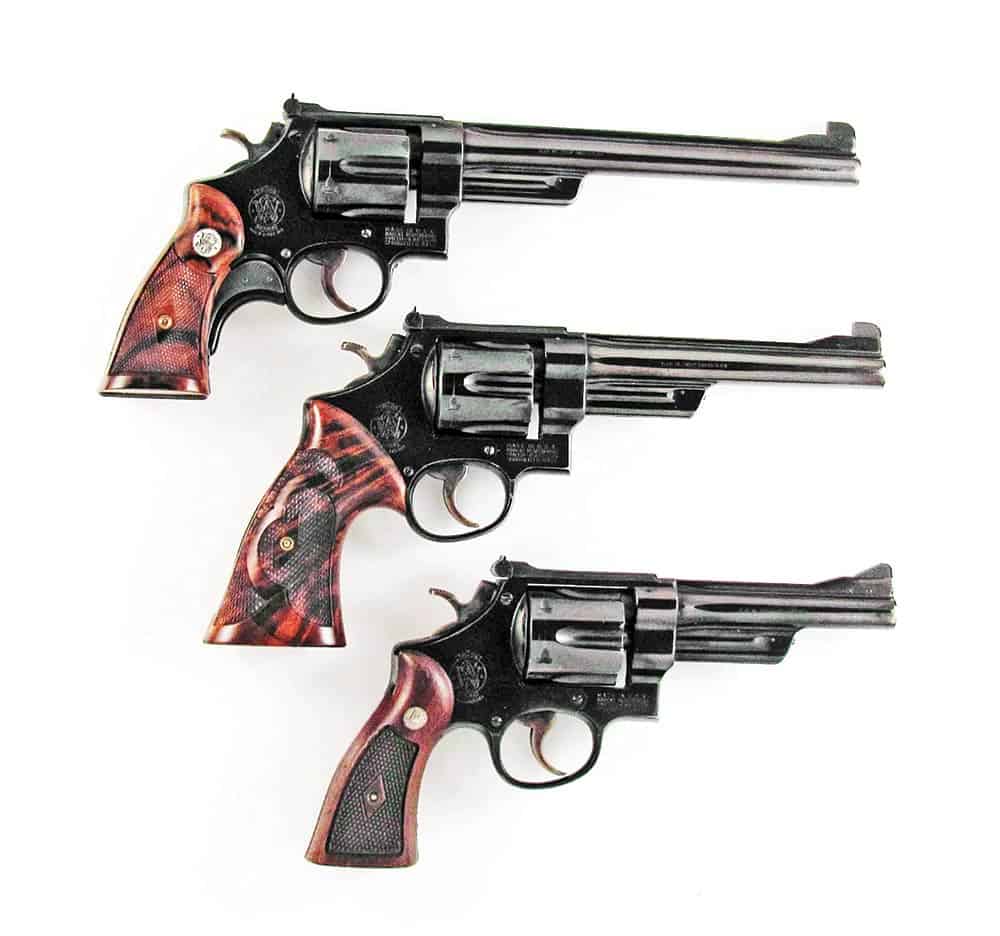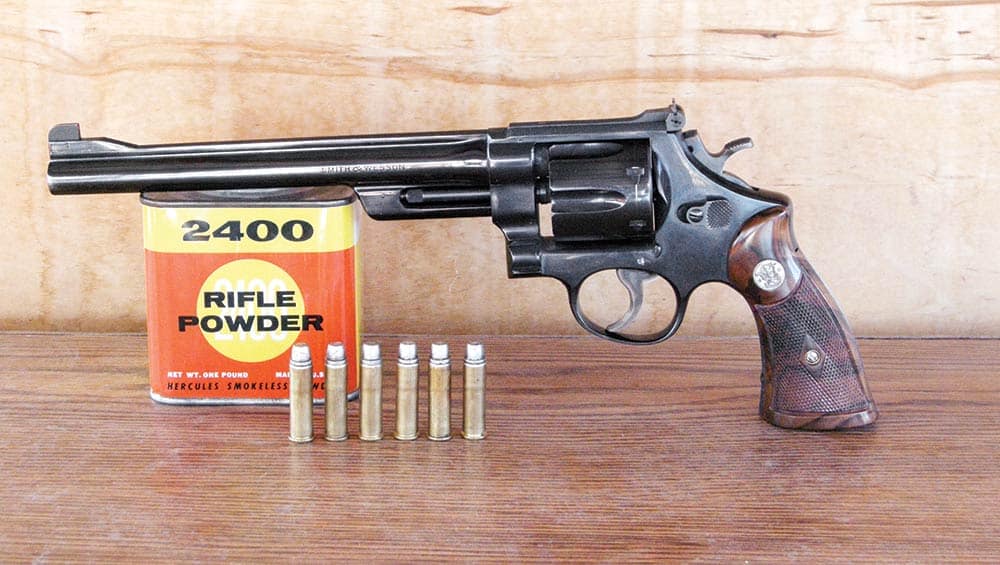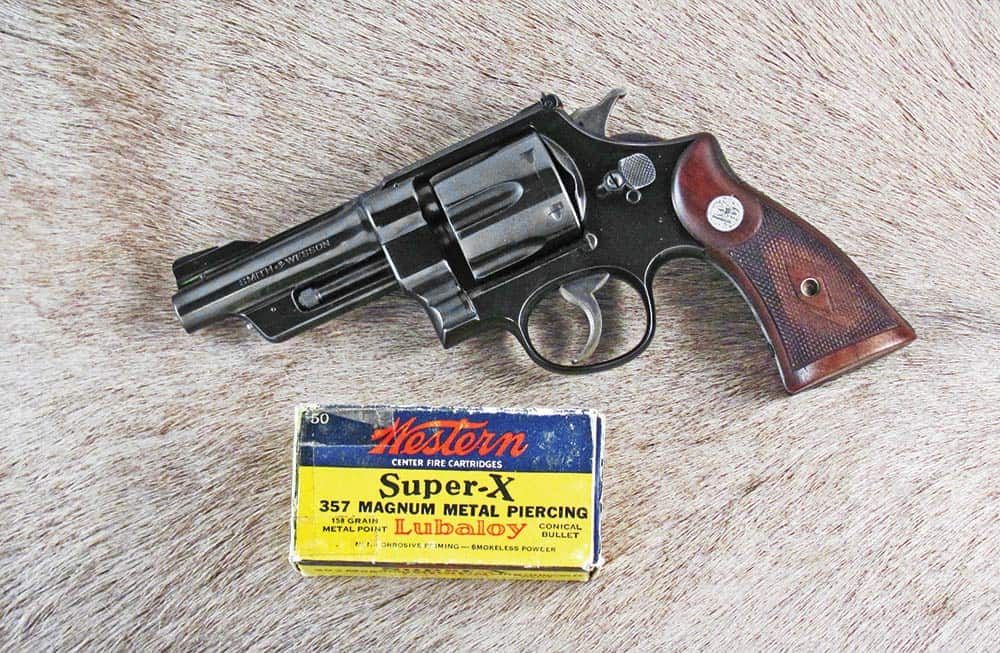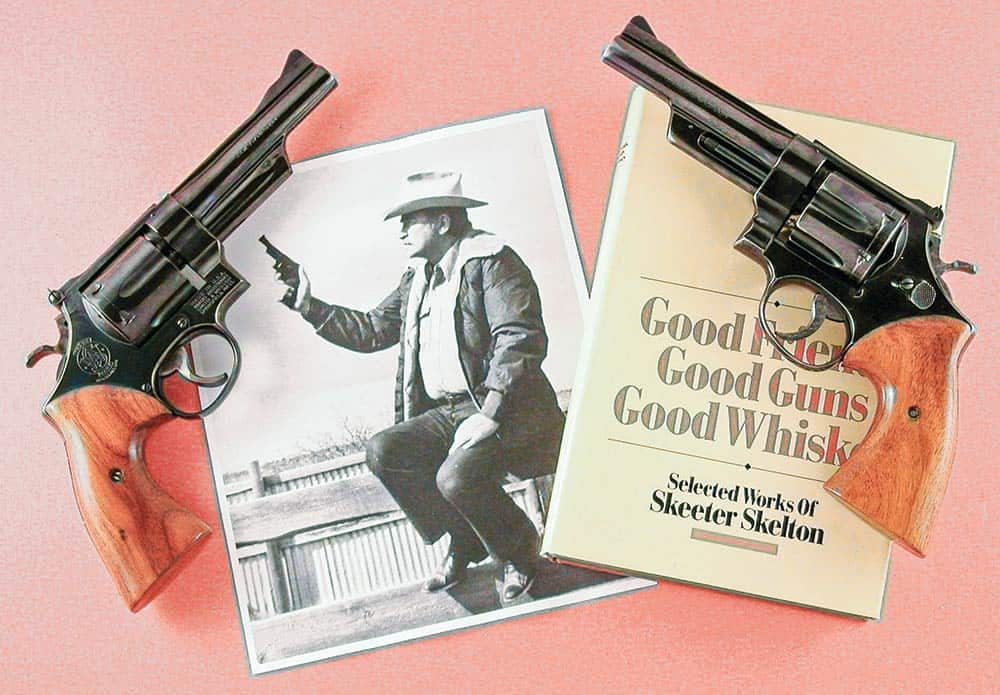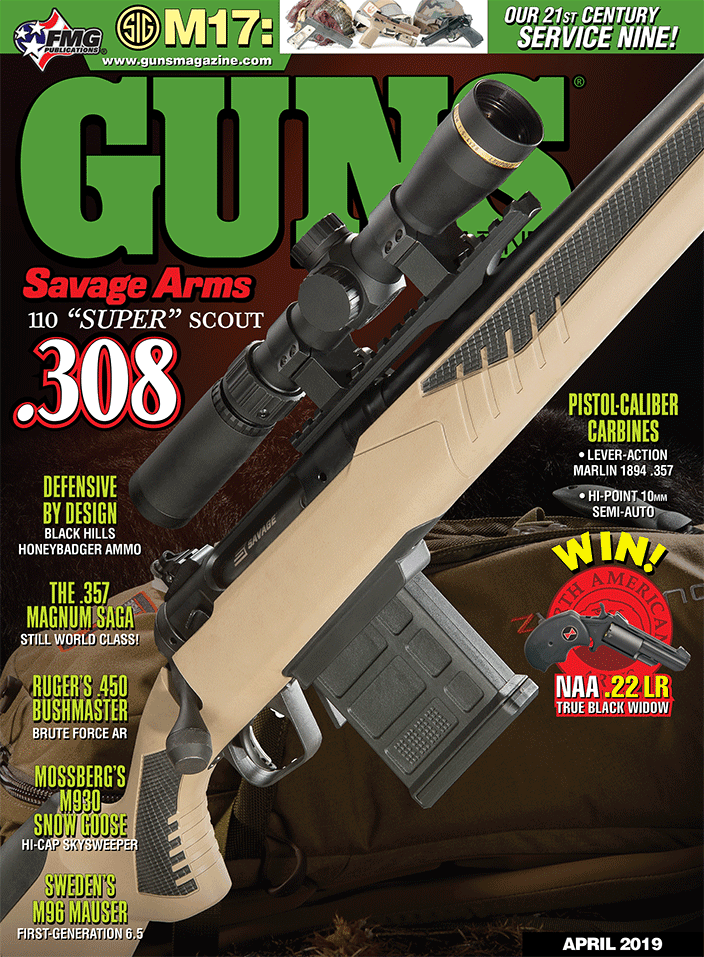Motor Bandits And Big Game
During the 1920s the bad guys were winning the war against the good guys simply because gangsters were much better armed. The V8 Ford had arrived and was used to great success by bank robbers of the time. Confrontations often saw good guys armed with .38 Specials going against gangsters in fast-moving vehicles and armed with Thompson SMGs and Browning Automatic Rifles.
In the late 1920s both Colt and Smith & Wesson addressed the problem. From Colt came the .38 Super or Super .38 (depending upon who was speaking) chambered in their 1911 while Smith & Wesson used their .44 frame revolver chambered in .38 Special to handle what we now often refer to as .38/44 rounds. The special revolvers arrived in April 1930 as the .38/44 Heavy Duty using a pre- Plus P loading of a 158-gr. bullet at 1,175 fps. It was a good start but for the boys at S&W it was only the beginning.
Phil Sharpe is the main figure responsible for the .357 Magnum and to come up with the case for the ammo, he simply lengthened the standard .38 Special from 1.155" to 1.290" to prevent the more powerful round from being dropped in a .38 Special cylinder. Such mistakes could result in a disaster for the shooter or any one standing close by.
